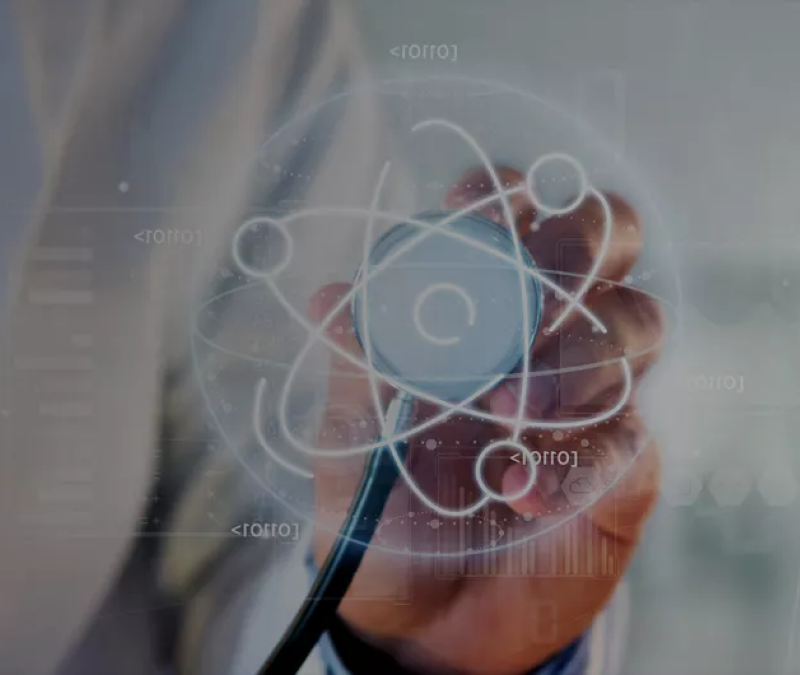Welcome to the Nuclear Medicine Department at Aster Hospital, Whitefield – your gateway to advanced diagnostics and personalized healthcare. Nuclear medicine is a specialized branch of medical imaging that utilizes small amounts of radioactive materials, known as radiotracers, to diagnose and treat various medical conditions. Unlike conventional imaging methods such as X-rays or CT scans that primarily capture anatomical structures, nuclear medicine provides a unique perspective by revealing the physiological processes and functions. This is achieved by introducing radiotracers into the body, which emit gamma rays that are then detected by specialized cameras, creating detailed images of internal functions.
Advanced Technology & Facilities
Well equipped with the latest medical equipment, modern technology & infrastructure, Aster Hospital is one of the best hospitals in India.
United Imaging, UMI 550 Digital PET/CT scanner
First in Bangalore: Pioneer in introducing advanced imaging technology.
Ultra-fast, high-resolution: Swift and detailed imaging for accurate diagnosis.
Complete Organ Coverage: 24 cm axial FOV provides full organ coverage, enabling dynamic studies.
Quick Whole-Body Scans: Acquires whole-body scans in just 4 positions, completing scans in under 10 minutes.
Reduced Radiation Dose: Cuts patient radiotracer dose by 50% for enhanced safety.
Small Lesion Detection: The industry's smallest crystal (2.7 mm) allows precise detection of small lesions.
Ultra-High Resolution: Achieves 2.9 mm NEMA and 1.4 mm Clinical Resolution for detailed imaging.
Advanced Technologies: Incorporates advanced features like TOF, PSF, HYPER Iterative, and HYPER DPR for improved image quality.
Best Image Clarity: Higher Matrix (600x600) ensures optimal image clarity.
High Temporal Resolution: Rapid 0.5-sec rotation speed enhances temporal resolution for detailed imaging.
a) PET CT Scan
A positron emission tomography/computed tomography (PET/CT) scan, is a sophisticated medical imaging technique that combines two powerful technologies to provide comprehensive information about the structure and function of the body.
When is it used?
PET/CT scans are widely used in oncology to
Detect and stage various types of cancer
Identify early disease even before the onset of symptoms
Precisely locate and characterize lesions
Assess the extent of disease spread
Help physicians plan appropriate treatment strategies
Guide biopsy and surgery
Monitor treatment response
Reduce unnecessary procedures
PET/CT scan can also be used to diagnose
Heart conditions such as coronary heart disease
Neurological Disorders such as Alzheimer's disease, Parkinson's disease, and brain tumours
Infectious and inflammatory diseases
Endocrine disorders
Bone disorders
How it works?
We inject a tiny amount of radiotracer called fluorodeoxyglucose (FDG-18) into your body. This radioactive material emits signals depending on how much sugar your tissues are absorbing.
A PET scanner then detects these signals, measuring the activity of your cells. This helps us spot areas with increased or unusual activity, like where tumours may be developing.
At the same time, a CT scan uses X-rays to create detailed pictures of your body's structure, showing the size and location of organs and any potential issues. PET/CT scans typically have a lower radiation dose compared to conventional CT scans.
The PET/CT scan merges these details, giving us a complete picture of both metabolic activity and anatomical structures. This helps us understand your health more accurately.
b) PSMA PET Scan
Prostate-Specific Membrane Antigen PET (PSMA PET) scan, is an advanced medical imaging technique used in prostate cancer diagnosis and management. It is particularly valuable for detecting and staging prostate cancer, guiding treatment decisions, and monitoring the response to therapy with high precision.
How does it benefit prostate cancer management?
A PSMA PET scan enables timely action, making it an essential tool in the prostate cancer treatment process.
Detects prostate cancer at an earlier stage when it is most curable and treatable.
Pinpoints the exact location and extent of prostate cancer.
Provides detailed information for accurately staging the cancer.
Helps in personalizing treatment strategies based on the specific characteristics of the cancer.
Enables real-time monitoring of how well the cancer is responding to treatment.
Reduce the need for invasive procedures by providing comprehensive information through non-invasive imaging.
Contributes to better treatment outcomes through precise and targeted management.
Assists in more effective follow-up care by identifying any potential recurrence or spread of the cancer.
How it works?
A PSMA PET scan works by using a special radioactive substance that has a preference for prostate-specific membrane antigens (PSMA), found in higher amounts on prostate cancer cells.
You will receive an injection of a radioactive substance.
The injected radiotracer circulates in your body and is naturally absorbed by prostate cancer cells if they are present.
A PET scanner then captures images that highlight areas where the substance has accumulated, helping to pinpoint the location and extent of prostate cancer cells in your body.
NM830 all-digital Elite NXT detector technology
Advanced Gantry Design: Slim-profile, wide-bore, robotic gantry for comfortable scans. Detectors in 180° and 90° orientations for efficient SPECT and whole-body scanning. Rapid multi-axis gantry motions for quick scans.
Superior Image Quality: Achieved through advanced Elite NXT detector technology and SPECT-optimized design.
Low Dose Imaging: Capable of imaging at half the patient dose without compromising image quality.
Automated Motion: The detector moves in/out and rotates around the ring automatically, adapting to different scanning positions.
Flexible Design: Accommodates various patient positions, including upright seated or standing, as well as imaging patients on stretchers.
Efficient Scanning: Real-time Automatic Body Contouring (ABC) enhances efficiency and resolution in different scanning procedures while maximizing image quality by minimizing patient-detector distance.
a) SPECT/Gamma Camera Scan
A Single Photon Emission Computed Tomography (SPECT) scan is a nuclear imaging technique that uses radioactive tracers and gamma rays to create detailed, 3D images of internal structures in the body.
It can provide information about blood flow, and organ function, aiding in the diagnosis and management of various medical conditions, including cardiovascular, neurological, and bone disorders. SPECT is particularly valuable for visualizing functional processes within the body.
When is it used?
Some of its key applications include:
Assess blood flow to the heart and cardiac function in heart conditions.
Visualize brain function in epilepsy, Alzheimer's disease, and brain tumours.
Detect abnormalities in bones and joints in arthritis, fractures, and bone infections.
Identify and localize tumours, assess their metabolic activity, and monitor the response to cancer treatments.
Diagnose thyroid conditions, such as nodules or hyperthyroidism.
Evaluate lung function and detect pulmonary embolism.
Identify areas of infection or inflammation in various organs.
Provide information about blood flow and function to the kidneys.
How does it work?
SPECT provides information about the function of the organs or tissues being examined, helping your doctor to understand how well these structures are working.
You will receive an injection of the radiotracer, usually into a vein in your arm.
The radiotracer circulates in your body and emits gamma rays.
The radioactive element is chosen based on its ability to emit detectable gamma rays without posing excessive radiation risk to the patient. Commonly used radioactive isotopes include technetium-99m, iodine-123 or 131, xenon-133, flourin-18 or thalium 201.
A special camera called a gamma camera captures the gamma rays emitted by the radiotracer. This camera rotates around you, taking images from various angles.
The computer processes the collected data to create detailed 3D images of the area being studied, such as the heart, brain, bones, or other organs.
Why Choose Aster Whitefield Bangalore?

Comprehensive Services: Whether you are seeking early detection of diseases, evaluating the function of organs, or undergoing targeted treatments, our facility is equipped with cutting-edge technology to meet your unique healthcare needs.
Patient-Centric Approach: Your well-being is our priority. Our compassionate staff is dedicated to addressing your concerns, providing clear information, and ensuring you feel confident and cared for every step of the way.
Expert Team: We boast a team of highly skilled board-certified nuclear medicine physicians and technologists with extensive experience in the field.
Innovation and Excellence: We are committed to staying at the forefront of medical innovation. This dedication ensures that you receive the highest standard of care with the latest advancements in nuclear medicine.
Embark on a journey of health and well-being with Aster Whitefield's Nuclear Medicine Department – where advanced technology meets compassionate care for a brighter and healthier tomorrow.




